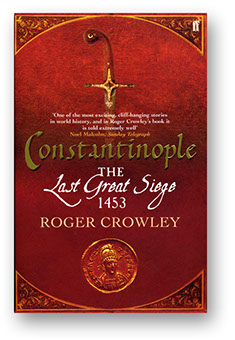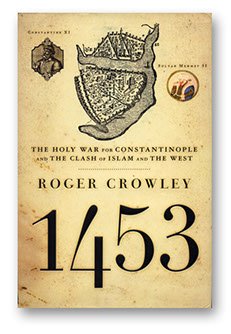

Constantinople/1453
Constantinople: The Last Great Siege (US title: 1453)
‘I shall tell the story of the tremendous perils and the loss of Constantinople, which I observed at close quarters with my own eyes.’ Leonard of Chios.
Constantinople: The Last Great Siege tells the story of one of the great forgotten events of world history - the fall of Constantinople to the Ottoman Turks in1453.
For a thousand years Constantinople was quite simply the city: fabulously wealthy, imperial, intimidating - and Christian. Single-handedly it blunted early Arab enthusiasm for Holy War; when a second wave of Islamic warriors swept out of the Asian steppes in the Middle Ages, Constantinople was the ultimate prize: ‘The Red Apple’. It was a city that had always lived under threat. On average it had survived a siege every forty years for a millenium – until the Ottoman Sultan, Mehmet II, twenty-one years old and hungry for glory, rode up to the walls in April 1453 with a huge army, ‘numberless as the stars’
Constantinople is the taut, vivid story of this final struggle for the city told largely through the accounts of eyewitnesses. For fifty-five days a tiny group of defenders defied the huge Ottoman army in a seesawing contest fought on land, at sea – and underground. During the course of events, the largest cannon ever built was directed against the world’s most formidable defensive system, Ottoman ships were hauled overland into the Golden Horn, and the morale of defenders was crucially undermined by unnerving portents. At the centre is the contest between two inspirational leaders, Mehmed II and Constantine XI, fighting for empire and religious faith, and an astonishing finale in a few short hours on 29 May 1453 – a defining moment for medieval history.
Constantinople is both a gripping work of narrative history and an account of the war between Christendom and Islam that still has echoes in the modern world.

UK edition

US edition